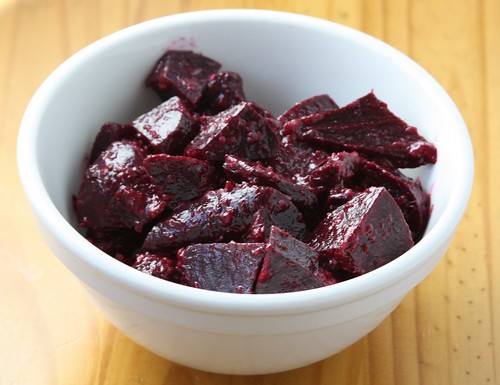I became mortal last week. One phone call and one letter took away that lingering innocence of youth and reminded me that no one, not even myself, can live forever. Here, in the center of my being, is the undeniable understanding that every moment we have is precious; every morsel of food is important; and nothing is to be overlooked.
The phone call was from my mother. She just got the news that she had been diagnosed with breast cancer. Then, in what felt like seconds later, I received a letter from my doctor. My blood tests came back abnormal. I have high cholesterol.
The news effected me in unexpected ways. When I spoke with my mother, I found zen-like calm, hope and positivity for my mother’s recovery. I felt oddly at peace, without fear and satisfied with the idea that we will find a treatment that will heal her. And then, in the privacy of my own home, I openly mourned the loss of bacon in my life.
Goodbye Guanciale
My off-the chart 250 cholesterol number on the doctor’s letter read like a foodie death sentence. The letter suggested in detail I “replace butter with olive and canola oil…Replace red meat with fish, poultry and tofu…Limit foods with high cholesterol.”
I started freaking out. No more fearless consumption of fennel sausage pizza at midnight? No more bacon draped hamburgers for lunch? No chicken liver bruschettas as a quick mid-day snack? What about those yolk-dripping bacon and egg sandwiches I love so much? No more gobbling up the frosting-heavy corner piece of birthday cake?
I paced my apartment. I was a vegetarian once. I could do it again, right? But now that I know what I know, how could I turn my fork away from all those great foods I’ve come to love and build my whole life around?
The cure for cancer
It’s been days since we received her first diagnosis. There’s still so much we need to find out. But in the meantime my mother and our collective family have been doing our share of internet research. My mother doesn’t care much for “traditional” medicine. She fears the mainstream medical line of thinking and clings to the old ways of healing.
My mother says she can cure herself of cancer with the power of raw food. She says that with lots of whole grains, flax seed oil and raw fruits and vegetables she can bring healing to her body without the use of chemo. There are other people—beautiful young and thriving people like Kris Carr of crazy sexy life–who say such things are possible.
The idea of clean living through a wholesome, locally sourced diet of fresh fruit and vegetables makes sense to me. I’ve seen the awesome power of food. The farmers’ market is my church. But what I don’t understand is HOW raw food can heal cancer. Is the cancer that my mother has responsive to such dietary changes? Will she need other helping factors to make the cancer go away? Will she need estrogen therapy? Chemo?
These are questions that will take time to answer. There’s still so much to learn. In the meantime, I offer this recipe for my mother. Because it’s her favorite dish from when she visited Pizzeria Mozza. And she asked for it.
Mom: I know this isn’t a raw dish. But I did find a way to incorporate some flax seed oil and the flavors of the beets make me feel so alive. I know it will do good things–for both of us.
Beets in Horseradish
Inspired by a dish at Pizzeria Mozza
Makes 2 servings
1 small bunch of baby beets (golf ball sized)
1 tbsp flax seed oil
1 tbsp fresh horseradish
2 tsp white wine or champagne vinegar
1 tsp Dijon or whole grain mustard
Salt to taste
Preheat oven to 425º. Rinse beets well, dry. Place on a sheet pan and tent with tin foil. Roast in oven for 30-40 minutes, or until a knife easily slices through the beets’ center. Let beets cool.
When cool enough to touch, slip the skins off with your hands. Roughly chop the beats into small chunks. Should be about 1 ½ – 2 cups. Put beets in a mixing bowl and drizzle with the flax seed oil. Toss to lightly coat the beets. Using a wooden spoon, gently mix in horseradish, vinegar and mustard. The beets should have a slightly creamy look to them. Taste. Add salt, if needed. Adjust for taste.
Serve cold or room temperature. Perfect as a side dish (literally), since beets have a way of coloring everything they touch!




